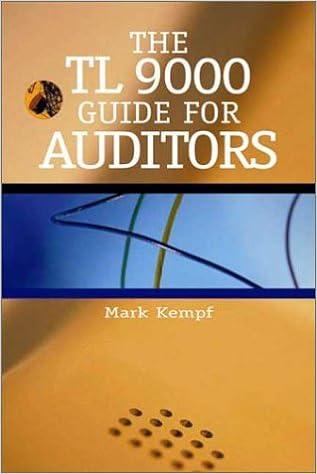



CARDINAL CORPORATION Balance Sheets December 31 2017 2016 2015 30,000 $24,000 $ 20,000 Cash Receivables (net) 110,000 48,000 48,000 Other current assets 62,000 80,000 78,000 70,000 90,000 50,000 Investments Plant and equipment (net) 603,000 400,000 360,000 Total Assets $913,000 $620,000 $540,000 $70,000 Current liabilities 98,000 75,000 Long-term debt 230,000 75,000 65,000 Common stock, $10 par 400,000 340,000 300,000 Retained earnings 185,000 130,000 105,000 Total Liabilities & Equity $913,000 $620,000 $540,000 CARDINAL CORPORATION Income Statements For the Years Ended December 31 2016 2017 Net sales 760,000 700,000 Cost of goods sold 420,000 400,000 Gross profit 340,000 300,000 Operating expenses (including income taxes) 220,000 210,000 $ 90,000 Net income $120,000 Additional information: 1. The market price of Cardinal common stock was $20.00 (2015) $22.48 (2016) and $38.88 (2017). 2. Cash dividends were declared and paid in 2016 $65,000 and $65,000 in 2017. 3. All sales are on Credit and the terms are 2/10/30 2017 2016 120,000 Profit Margin 15.8% 90,000 12.9% 760,000 700,000 340,000 760,000 45% 300,000 Gross Profit 43% 700,000 Asset Turnover 700,000 1.21 times 760,000 620,000 913,000 99 times 540,000 620,000 2 2 Earnings per Share 120,000 3.24 90,000 S 2.81 34,00040,000 30,00034,000 2 2 $38.88/$3.24 $22.48 $2.81 Price-Earnings Ratio 12 times 8 times = = 328,000 Debt Ratio 36% 150,000 620,000 24% 913,000 $65,000 40,000 $ 1.625 $65,000 34,000 Dividends S 1.910 $1.625/ $38.88 $1.91 $22.48 Dividend Yield 4.2% 8.5% Current Assets $220,000 $150,000 Current Liabilities 98,000 -75,000 $122,000 $75,000 Working Capital $220,000 $98,000 $150,000 / $75,000 Current Ratio 2.24 : 1 2.00: 1 Accts Receivable Turnover 760,000 10.27 times 700,000 14.58 times 48.000 48,000 100.00048,000 2 2 365 35 days 365 25 days Average Collection Days 10.27 14.58 1. The following observation can be made regarding the profitability of the Cardinal Company: a. The profitability of the corporation appears to have declined based on the profit margin and gross profit ratios. b. The profitability of the corporation appears to have increased based on per share and the price-earnings ratio c. The fact that dividends per share were reduced in 2017 indicates the company is not very profitable. d. Since Cash only increased by $6,000 the company has not been very profitable. earnings 2. In the analysis of the company regarding stock price, the following conclusion can be made: a. Investors arebecoming less optimistic as to the future of the company evidenced by the PE ratio b. The investors are more likely to be attracted to this company as an investment to provide a return of income (dividends) based on the Dividends and Dividend Yield. positive regarding the future performance of the company based c. The investors are on the growth of earnings per share and the PE ratio d. The sales generated by using the assets has been increasing. 3. In the assessment of the company's ability to pay debts, the following conclusion can be made a. The company's ability to pay short term debts has decreased based on working capital b. The ability to collect cash from customers has improved as indicated by the average collection days. c. The ability to pay long term debt has improved as indicated by the debt ratio. d. The company's ability improved from 2016 to 2017 represented by the current ratio. on the short run to pay debt appears strong and has 4. Assessment of the Accounts Receivable provides the following conclusion: a. While sales and receivables have increased, the collection efficiency has remained constant. b. We cannot make a conclusion as to the collection efficiency of the receivables without the Statement of Cash Flows c. Using accounts receivable turnover, the collection efficiency has declined and the average collection days have declined d. Using the accounts receivable turnover, the collection efficiency has declined and the time it takes to collect has increased 5. The assessment of the overall ability of the company to pay long term debt has decreased according to the following ratio: a. the asset turnover ratio b. the debt ratio c. the PE ratio. d. the current ratio. The remaining questions are independent of the data A successful grocery store would probably have 6. a low inventory turnover b. . high inventory turnover. zero profit margin d. a C. low volume 7. The current ratio would be of most interest to short-term creditors b. long-term creditors. stockholders . C. d. customers 8. Horizontal analysis is a technique for evaluating financial statement data within a period of time. a. b. over a period of time. on a certain date. C. d. as it may appear in the future 9. Which of the following is used to see how a company's operating expenses, as a percentage of net sales, have changed from one year to the next? vertical analysis b. . horizontal analysis. ratio analysis GAAP analysis. c. d. 10. If an analyst wants to see how sales revenue of a company has changed from one year to the next vertical analysis of the Balance Sheet would be used. . horizontal analysis of the Income Statement would be used horizontal analysis of the Balance Sheet would be used. vertical analysis of the Income Statement would be used b. C. d










